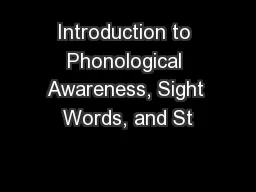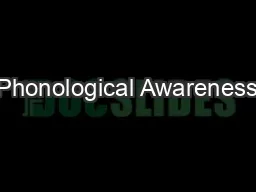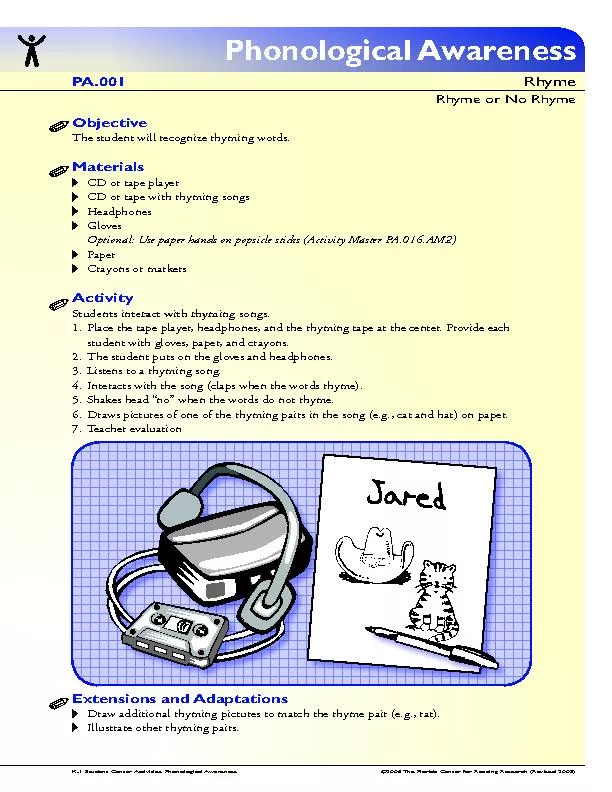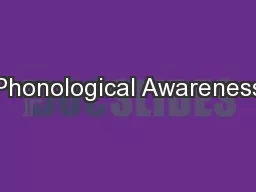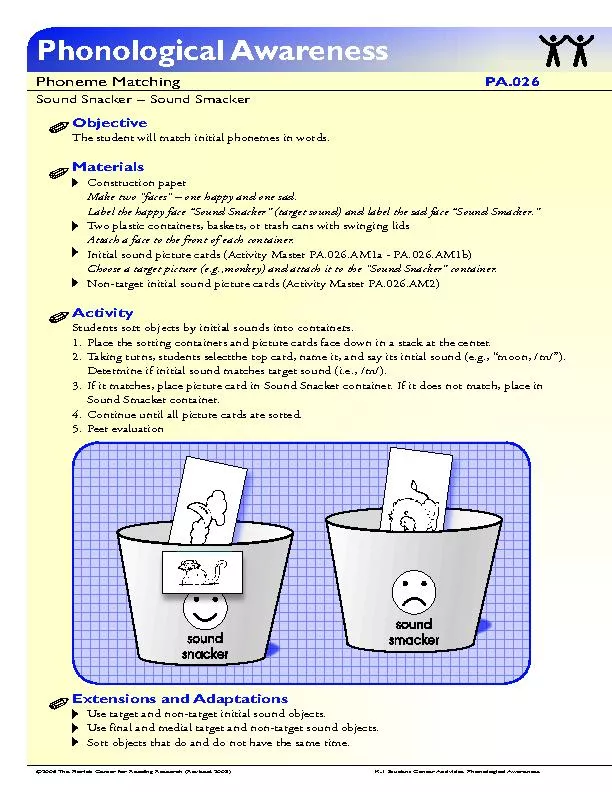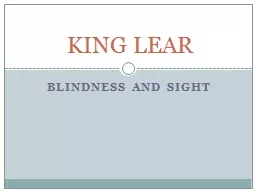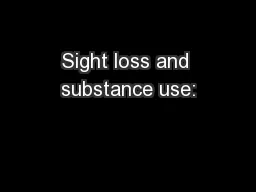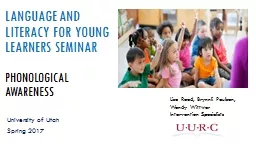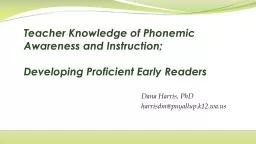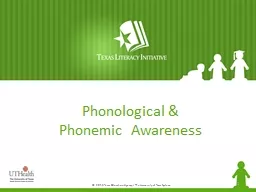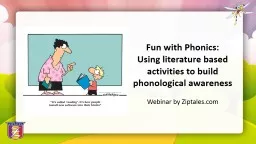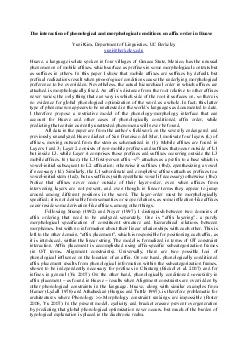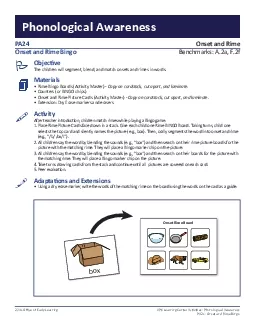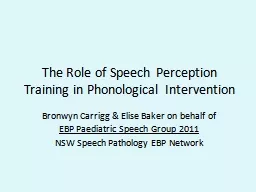PPT-Introduction to Phonological Awareness, Sight Words, and St
Author : celsa-spraggs | Published Date : 2017-12-30
the to he a I and you s at h orse Sort verb sort arrange systematically in groups separate according to type class etc she sorted out the clothes some to
Presentation Embed Code
Download Presentation
Download Presentation The PPT/PDF document "Introduction to Phonological Awareness, ..." is the property of its rightful owner. Permission is granted to download and print the materials on this website for personal, non-commercial use only, and to display it on your personal computer provided you do not modify the materials and that you retain all copyright notices contained in the materials. By downloading content from our website, you accept the terms of this agreement.
Introduction to Phonological Awareness, Sight Words, and St: Transcript
Download Rules Of Document
"Introduction to Phonological Awareness, Sight Words, and St"The content belongs to its owner. You may download and print it for personal use, without modification, and keep all copyright notices. By downloading, you agree to these terms.
Related Documents

